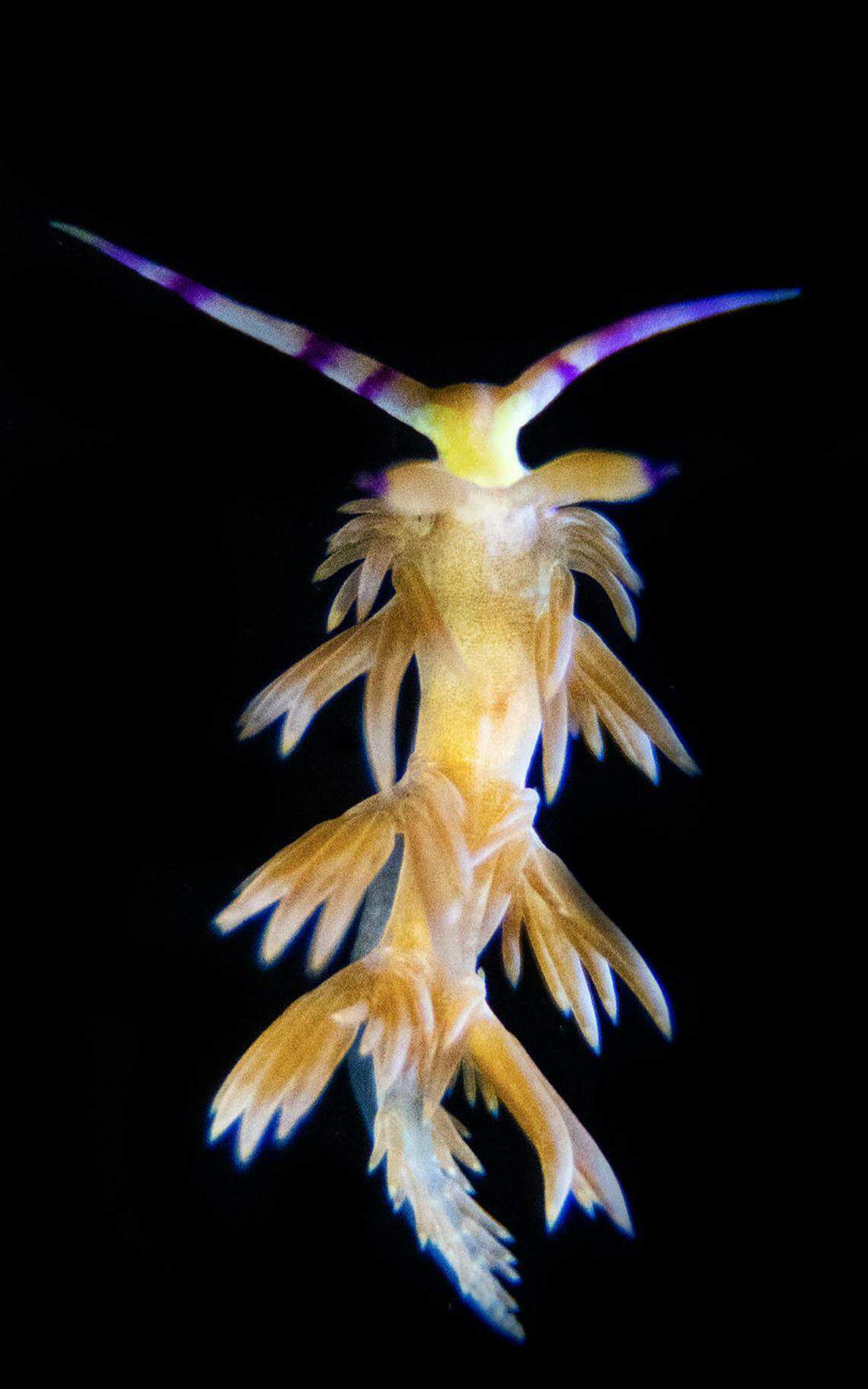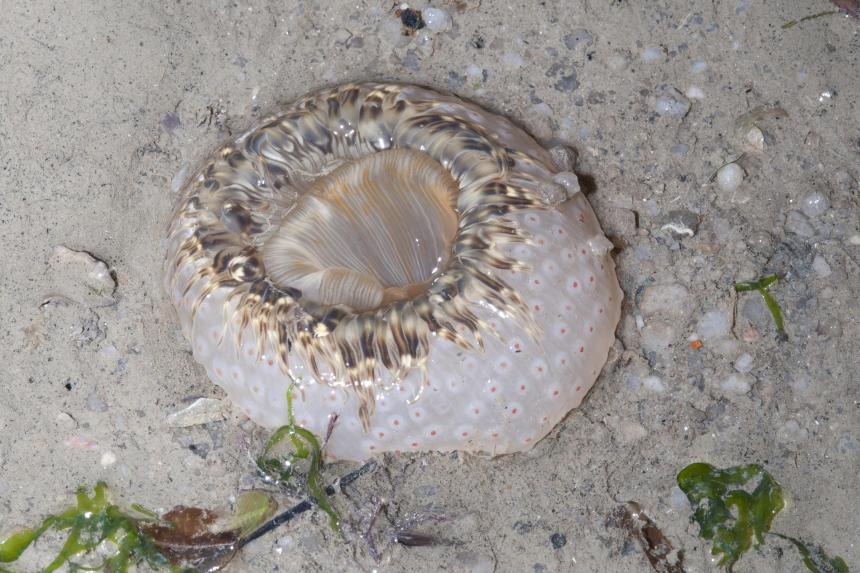SINGAPORE – Resting in plain sight in the sands off Changi’s coastline, a sea anemone that looks like a pale strawberry was identified recently by local scientists as a species new to science.
Findings on the tiger anemone – so called because of its stripes and ability to swallow prey larger than itself – were published in the scientific journal Zoological Studies.
While the creature has been noted by marine life enthusiasts since the 2000s, sea anemone researcher Nicholas Yap took about a decade to conclude that this species is like no other.
The 39-year-old research fellow at St John’s Island National Marine Laboratory told The Straits Times: “It’s such a chaotic group of animals and everything looks similar.
“I remember when I was in the National Museum of Natural History in Paris in 2019, I looked through the shelves (where other anemone specimens are stored) for two weeks just to make sure that nothing looked like this anemone.”
Confirming it was a new species involved genetic analysis of samples and poring through hundreds of specimens in museums across the globe.
The study was co-authored by researchers from the Museum of Tropical Queensland and the National University of Singapore.
The animal’s scientific name, Macrodactyla fautinae, is a tribute to one of the world’s leading authorities on sea anemones – the late Professor Emerita Daphne Gail Fautin from the University of Kansas, who was undecided on the species’ identity during her visits to Singapore.
The tiger anemone is just one of several species that Dr Fautin could not identify, said Dr Yap, who aims to continue his mentor’s work in describing anemone species.
Dr Fautin and Dr Yap helped discover the brown peachia anemone (Synpeachia temasek) in Changi, which is also unique to Singapore
Recounting Dr Fautin’s involvement in expeditions to survey the Republic’s marine biodiversity, marine enthusiast Ria Tan described the zoologist as a “very patient teacher who was always in a good mood during morning surveys”.
“She gave everyone a chance,” said Ms Tan, who is part of Singapore’s Anemone Army, a moniker coined by Dr Fautin for a group of citizen scientists who help collect specimens of the animal.

The scientists involved in the study also decided to name the pink-spotted anemone after Dr Fautin because it is similar to another anemone with pink dots that she had named after her husband, Dr Robert Buddemeier.
While the tiger anemone is rather common in the Changi area, it has not been seen elsewhere, which warrants further research, said Dr Yap.
Much remains unknown about sea anemones, he added.
Anemone expert Meg Daly of Ohio State University said: “Broadly speaking, the tropics are perceived as relatively less biodiverse for sea anemones, compared with temperate regions and polar regions.”
This is probably because scientists who have studied sea anemones were or are usually based in temperate regions, she said, noting that biodiversity is not as well documented in the Indo-West Pacific, and as a result, names of sea anemones from elsewhere in the world may be used incorrectly.
Professor Daly said the tiger anemone is an unusual finding in the 21st century as it is a large-bodied anemone in shallow water.
“More commonly, the new species we are finding in the 21st century are smaller bodied, otherwise cryptic, or living in habitats that are very inaccessible,” she noted.
More than 1,000 species of sea anemones have been identified around the world, and there is a growing body of work done to understand their toxicity and potential for uses in medicine and novel materials.
Dr Yap, who also studies jellyfish, which are relatives of sea anemones, said: “A lot is still unknown about the venom of sea anemones and jellyfish. Knowing which anemone has stung a person helps find which treatment is effective.”
For instance, while vinegar is known to be useful to treat box jelly stings, it is not useful for other jellyfish, like the portuguese man-of-war, which can deliver painful stings too, said Dr Yap.
Researchers are also looking at how sea anemones adapt to climate change as the sea warms.
Dr Yap said: “So far, we’ve seen some evidence that some sea anemones have colonised spaces where corals once thrived on Kusu Island, preventing younger corals from establishing themselves.”
More than meets the eye
Singapore’s researchers made another marine life-related discovery in May.
They found that Pteraeolidia semperi, a nudibranch or sea slug more commonly known as the blue dragon, is not a single species but many genetically distinct species that look similar.

This was sparked by Yale-NUS College graduate Nathaniel Soon’s encounters with different variations of the brilliant sea slug across the region and in Singapore’s waters.
It left him puzzled and determined to study them for his final-year project at Yale-NUS, where he pursued environmental studies.
His findings were published on May 31 in the Journal Of Molluscan Studies.
Within Singapore, researchers have discovered at least two lineages of the blue dragon from samples collected from offshore sites, including the Cyrene Reefs, Pulau Hantu and Pulau Semakau.
Mr Soon said: “Nudibranchs function as essential indicators of ecosystem health – an area with a wide variety of nudibranchs may suggest thriving and resilient reefs.”



